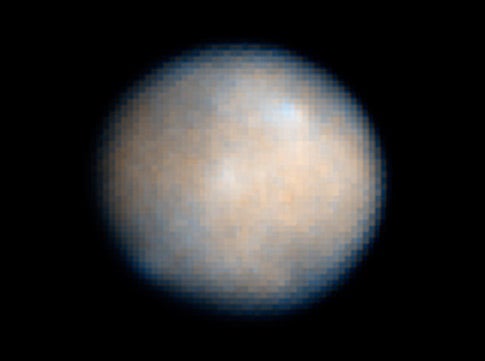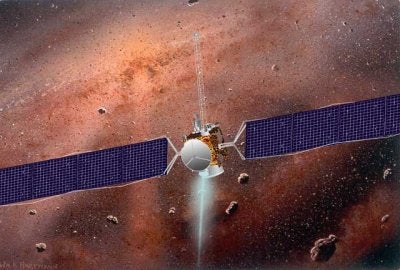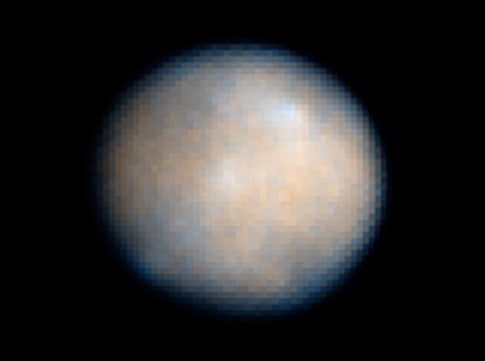“Dawn has completed the thrusting it needs to use Mars for a gravity assist to help get us to Vesta,” said Marc Rayman, Dawn’s chief engineer at JPL in Pasadena, California. “Dawn will now coast in its orbit around the Sun for the next half a year before we again fire up the ion propulsion system to continue our journey to the asteroid belt.”
Dawn’s ion engines may get a short workout in January 2009 to provide any final orbital adjustments prior to the craft’s encounter with the Red Planet. Ions are also scheduled to fly out of the propulsion system during some systems testing in spring. But mostly, Dawn’s three ion engines will remain silent until June, when they will speed Dawn toward its first appointment, with asteroid Vesta.
Dawn’s ion engines are vital to the misson’s 8-year, 3-billion-mile (4.9-billion-kilometer) journey to asteroid Vesta and dwarf planet Ceres. One of these frugal powerhouses can generate more than 24 hours of thrusting while consuming about 9 ounces (about 0.26 kilogram) – less than the contents of a can of soda – of the spacecraft’s xenon fuel supply. Over their lifetimes, Dawn’s three ion propulsion engines will fire cumulatively for about 50,000 hours (more than 5 years) – a record for spacecraft.
Dawn will begin exploring asteroid Vesta in 2011 and the dwarf planet Ceres in 2015. These two icons of the asteroid belt have been witness to much of our solar system’s history. By utilizing the same set of instruments at two separate destinations, scientists can more accurately formulate comparisons and contrasts. Dawn’s science instrument suite will measure shape, surface topography, tectonic history, and elemental and mineral composition, and will search for water-bearing minerals. In addition, mission scientists will use the Dawn spacecraft, based on how it orbits both Vesta and Ceres, to measure the celestial bodies’ masses and gravity fields.












